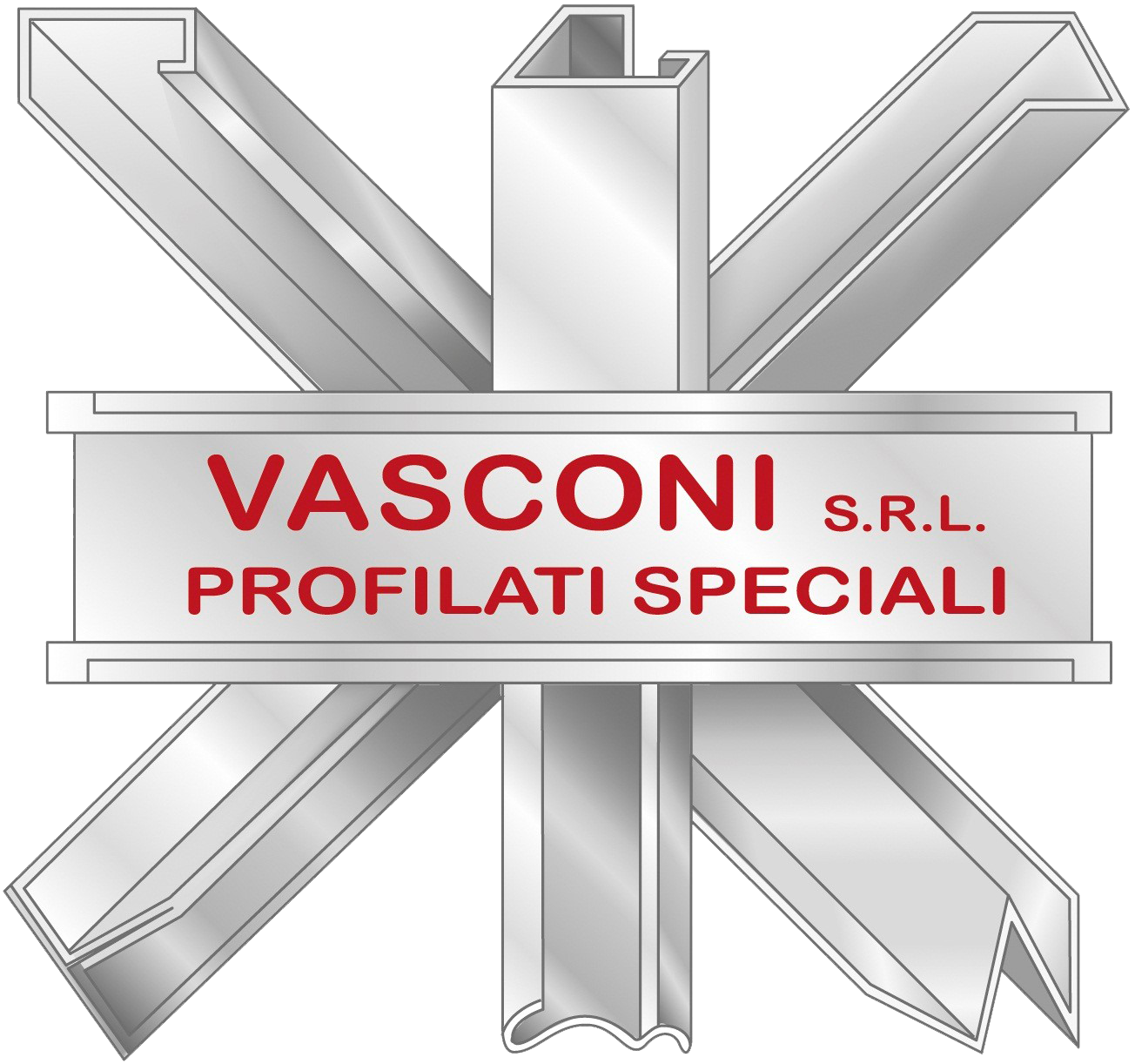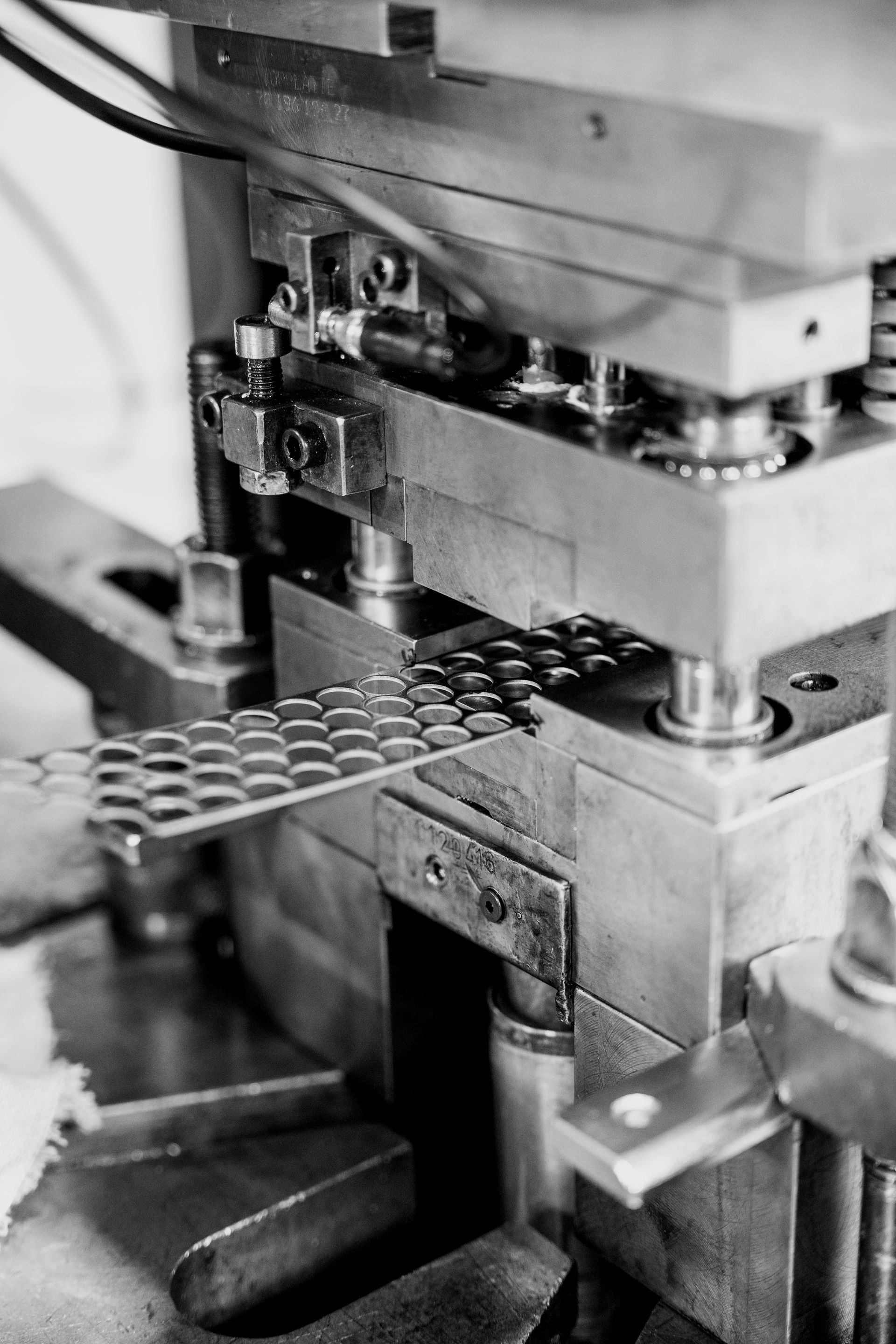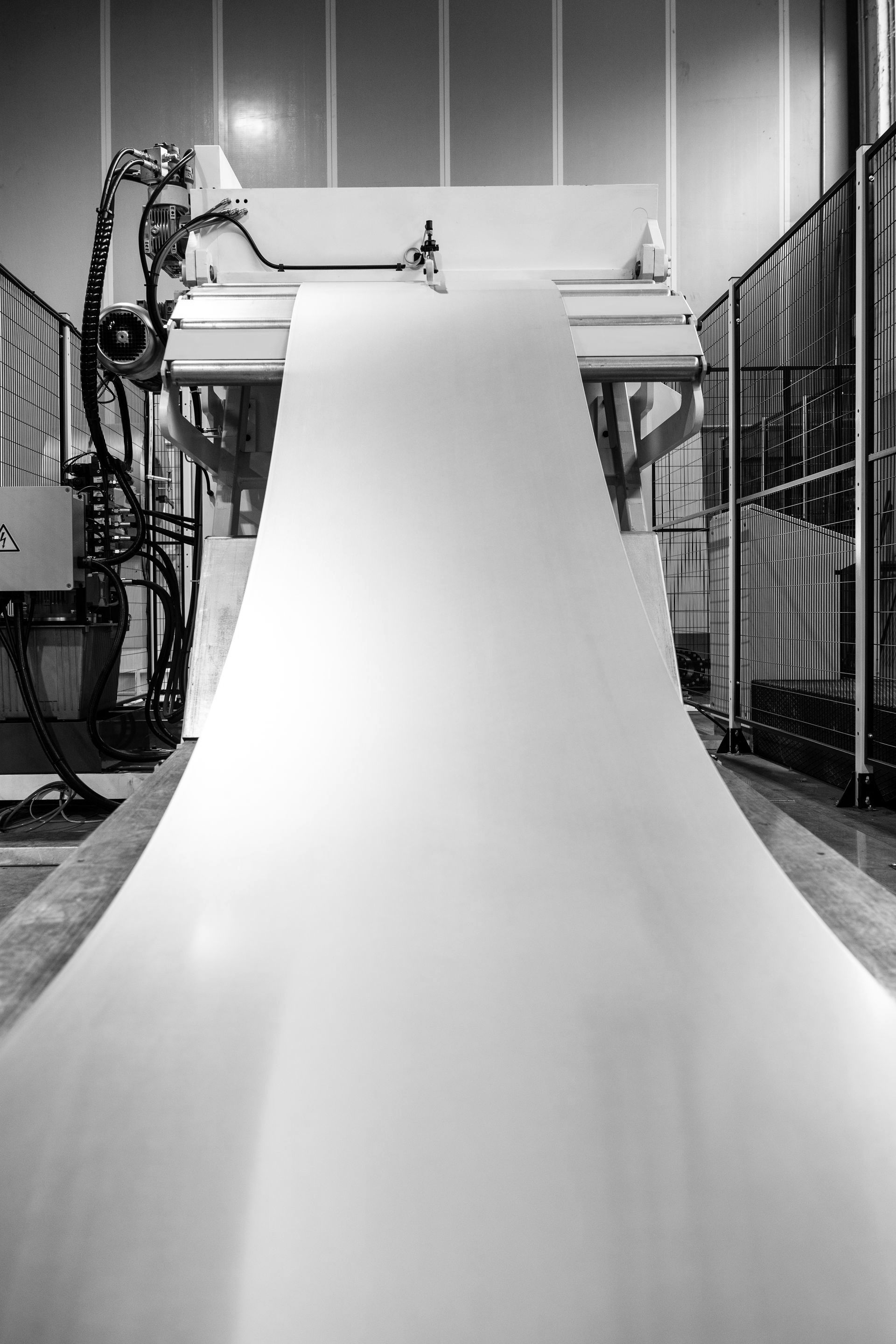Machining & products
We don't just shape metal, we make customized solutions, where each project gains value with our passion and know-how.
Our processes
We are distinguished by our ability to produce aesthetic and highly complex components. Our path to excellence begins with the order and continues through all stages of production, where each component undergoes rigorous quality control. We accompany the customer from design to finished product, investing in the best resources and technologies for each stage of the production process, guaranteeing results that exceed expectations and consolidate lasting partnerships.
Progressive stamping enables us to produce metal components with efficiency and
precision. During progressive stamping, the metal strip is processed through a series of stations in a press. Each die, built according to customer specifications, is made by stations that perform a specific operation, such as moulding, deep drawing, punching, bending, and cutting of the metal. The piece is thus gradually formed as it moves through the stations until it reaches its final shape.
Applications and advantages
Production efficiency: by integrating a sequence of operations in the die, complex parts can be obtained in a single machining cycle, reducing time, increasing productivity and optimizing the cost of the component.
Precision and quality: progressive operations ensure accurate and uniform machining, reducing errors; our experience also allows us to use these processes for aesthetic parts, guaranteeing high quality standards.
Versatility and adaptability: progressive pressing is suitable for a wide range of components, for mass production with medium to high numbers, offering flexibility and adaptability to customer needs.
Sustainability: the process is designed to minimize material waste while providing greater efficiency and sustainability. Being a cold stamping process, it has a lower impact on energy consumption.
In-line applications: automated assemblies, such as pin insertion, label or double-sided adhesive application, or threading can be integrated into existing production lines to optimize overall efficiency.
Transfer dies are an innovative solution for the production of pieces requiring complex machining with a single machine. In the stamping process using a transfer press, the transfer die is a piece of equipment designed for shearing and deforming of sheet metal that uses integrated external part for the transferring of the piece, using bars on which are mounted components called " little hands." Our 2/3-axis transfer presses provide versatility, precision and efficiency, making them an ideal choice for companies seeking to improve quality and reduce costs in the production of complex components.
Applications and advantages
Production of complex components: it is ideal for pieces with specific technical and aesthetic requirements.
Efficiency and precision: our 2/3-axis transfer presses provide versatility and precision, improving quality and reducing costs.
Recommended for mass production: it is optimized for high-volume mass production, thereby helping to ensure efficient management of the production process.
Maintenance and modification: it features more optimized management of modification and maintenance costs.
Automatic shearing of small metal parts involves the use of highly specialized automatic machines that perform shearing operations on small metal materials. These machines are able to feed, shear, and collect small metal parts continuously and quickly, ensuring efficient and accurate production.
Applications and advantages
Dimensional accuracy: it ensures high precision in the dimensions of manufactured components, even on very small parts.
Production efficiency: it is a highly automated process, ideal for large-scale production of components.
Reduced production time: it enables reduced production time due to the speed and continuity of the automated process.
Material adaptability: it can work with a wide range of metal materials, offering flexibility in applications.
The repeated shearing and bending process is used for mass production with medium to low volumes. It represents a cheaper initial investment solution than progressive stamping, but with a higher component cost. This process involves deforming the sheet metal by combining multiple shearing and bending operations with manual steps to achieve the final shape of the component.
Applications and advantages
Dimensional accuracy: it ensures high precision in the dimensions of manufactured components, meeting design specifications.
Traceability and quality: every step of the process is tracked and controlled. Our commitment to continuous training improves efficiency and product quality.
Initial investment: repeated shearing and bending requires a lower equipment cost than progressive stamping.
Bending with repeating die: it allows precise and repeatable bend angles, optimizing processing time and reducing the risk of errors compared to other technologies without the use of dies.
Both spot and projection welding meet a wide variety of industrial applications in mass production processing, offering an effective solution to join materials through heat and pressure. Projection welding involves heating materials by applying high-intensity electric current at specific contact points between the components to be joined. These contact points, called projections, are pressed together as the current is applied, creating heat through electrical resistance and forming a strong, solid weld.
Applications and advantages
Structural strength: it ensures a strong and stable connection between components, which is resistant to mechanical stress and vibration.
Production speed: it is a fast and efficient process, ideal for mass production.
Weld quality: it provides a uniform and high-quality weld, with few defects or imperfections.
Material economy: it minimizes the amount of additional material needed for welding,
reducing waste and costs.
Adaptability: it can be used on various materials, such as steel, aluminum and special alloys.
Manual or semiautomatic machining operations, such as crimping, re-bucking, riveting, buttoning and nailing are essential for joining components, offering a wide range of industrial applications. These processes use machinery found in our production facility to perform assembly and/or fastening operations on components. These stages involve the direct intervention of operators according to project specifications. This approach offers flexibility and the ability to adapt to variations in production processes, allowing to handle a wide range of components and situations.
Applications and advantages
Precision and control: it allows components to be joined precisely, ensuring a secure and reliable connection.
Flexibility: it is suitable for a wide range of applications and component types, offering flexibility in manufacturing operations.
Adaptability: it can be used for a variety of materials and component geometries, adapting to specific product requirements. It is also ideal for complex components or small parts that require delicate handling.
Assembly applications: they can be manual or semiautomatic.
Shrink packaging uses a thermoplastic film of various thicknesses that, once applied to the product and exposed to heat, uniformly shrinks, securely wrapping the contents in a tight fit. This process creates a sealed and protective package that perfectly conforms to the shape of the products, providing a barrier against moisture, dust, and damage during transportation and storage.
Applicazioni e vantaggi
Kit Assembly: the ability to gather different components and package them inline.
Product Protection: shrink packaging creates an effective barrier, reducing the risk of damage, breakage, or leakage during handling and delivery.
Professional Presentation: it gives products a professional and neat appearance, enhancing brand image and customers' perception of quality.
Customization and Marketing: shrink film can be customized with graphics or branding.
Die construction, modification, and maintenance is an important aspect in the production of metal components, as it ensures reliability and continuity to the production process.
Die construction: a complex process involving the design and manufacture of the appropriate tools needed to form metal materials; sharing the requirements and specifications with the customer while supported by our experience is the added value of our service. Dies are designed with extreme precision to ensure the reproducibility and quality of components produced over time.
Die modification: a necessary activity to adapt tools to design changes in components throughout the life of the equipment.
Die maintenance: is essential to ensure proper operation and durability of production equipment. This includes replacement of damaged parts, sharpening and lubrication of contact surfaces to prevent wear and extend the life of the dies.
Applications and advantages
Accuracy and reliability: well built, modified and maintained dies ensure accuracy and reliability in the production of components.
Reduced downtime: regular die maintenance reduces production downtime due to equipment failure or malfunction.
Reduced production costs: efficient and well-maintained dies reduce overall production costs, improving the efficiency and quality of the production process.
Finishing processes
Finishing processes play an essential role in completing our products, adding aesthetic value, protection and functionality.
Applications and advantages
- A single supplier: customers can obtain a product that complies with their specifications and requirements, without having to worry about the management of external machining
- Partner companies: we work with qualified and certified partner companies to guarantee the best quality of finishing processes, ensuring compliance with the highest industry standards
- Certain costs: with the inclusion of external processes in the finished product, the overall cost becomes clear and transparent from the start, with no additional surprises or hidden costs
- Simplification: receiving a finished product eliminates the need for the customer to coordinate the delivery of components and materials from different suppliers, simplifying logistics management and reducing the risk of errors or delays in the supply chain.
- Quality: by working with qualified suppliers for external processes, the customer can benefit from a higher level of quality due to the expertise and experience of the partners selected. This results in high-quality end products that meet customer expectations.
FINISHING PROCESSES
We work with qualified and certified partner companies to ensure the best quality of finishing, and we offer a diverse range of services to meet your specific needs.
Cleaning
The removal of impurities, machining residues and contaminants from the surface of components, ensuring a clean, defect-free finish.
Tumbling
The finishing process to remove surface imperfections, burrs or smears from components, ensuring a smooth and uniform surface.
Sandblasting
.The use of abrasive materials to clean, smooth or prepare the surface of components prior to finishing, removing impurities and improving coating adhesion.
Galvanization
The application of a layer of zinc on the surface of metal components to protect them from corrosion and wear.
Heat treatments
They are controlled heating and cooling processes to change the mechanical and physical properties of materials, improving strength, hardness and durability.
Phosphate coating
A chemical process that makes the metal surface more homogeneous and suitable for further processing. This treatment facilitates the subsequent application of paints to the surface of the sheet metal, producing uniform, bright colors.
Nickel plating
It is a coating method that deposits a layer of nickel on the surface of the metal. This process can be performed without the use of electricity, thanks to a controlled autocatalytic reaction. Nickel plating gives uniformity and protection to the surface, making it more durable and suitable for further processing.
Cataphoresis
An electrochemical coating technique that uses an electro-conductive paint solution. An electrical charge is applied to make the paint adhere to the metal components, ensuring a uniform and protective finish.
Silvering
The application of a layer of silver on the surface of components to improve aesthetic appearance and corrosion resistance.
Powder coating
The application of protective or decorative coatings using epoxy powders, which ensures an aesthetic appearance and an infinite color chart.
Coppering
The application of a protective layer of copper on the surface of components to improve corrosion resistance and electrical conductivity.
Electrocoloring
The application of a layer of color to the surface of components by electroplating, providing a decorative and durable finish.
Screen printing
A printing technique that uses a stencil to transfer ink onto the surface of the component, allowing the creation of detailed and colorful designs.
Polishing
A process used to give a smooth, shiny surface to your metal components, improving aesthetic appearance and corrosion resistance.
Laser cutting
The use of a laser beam to precisely cut metal materials, ensuring clean, burr- free cuts for a precise, high-quality finish.
Punching
The use of punches to make holes, engravings or decorations on metal materials, providing a detailed and customized finish.
Bending
The use of bending machines to create precise and uniform bends on metal materials, enabling the formation of complex and detailed components.
Nuovo titolo
Production area
Two connected production sites: total area
7000 square meters, covered area
4500 square meters
Production capacity
50 million
pieces per year with over
400
dies operated
Strategic location
25 km from the highway junction,
15 km from the Swiss border

VASCONI S.r.l.
Via Battaglia S. Martino, 76
21030 Cuveglio (VA)
Contacts
+39 0332 650306
P.IVA 00210440129
Tutti i diritti riservati | Vasconi S.r.l.




